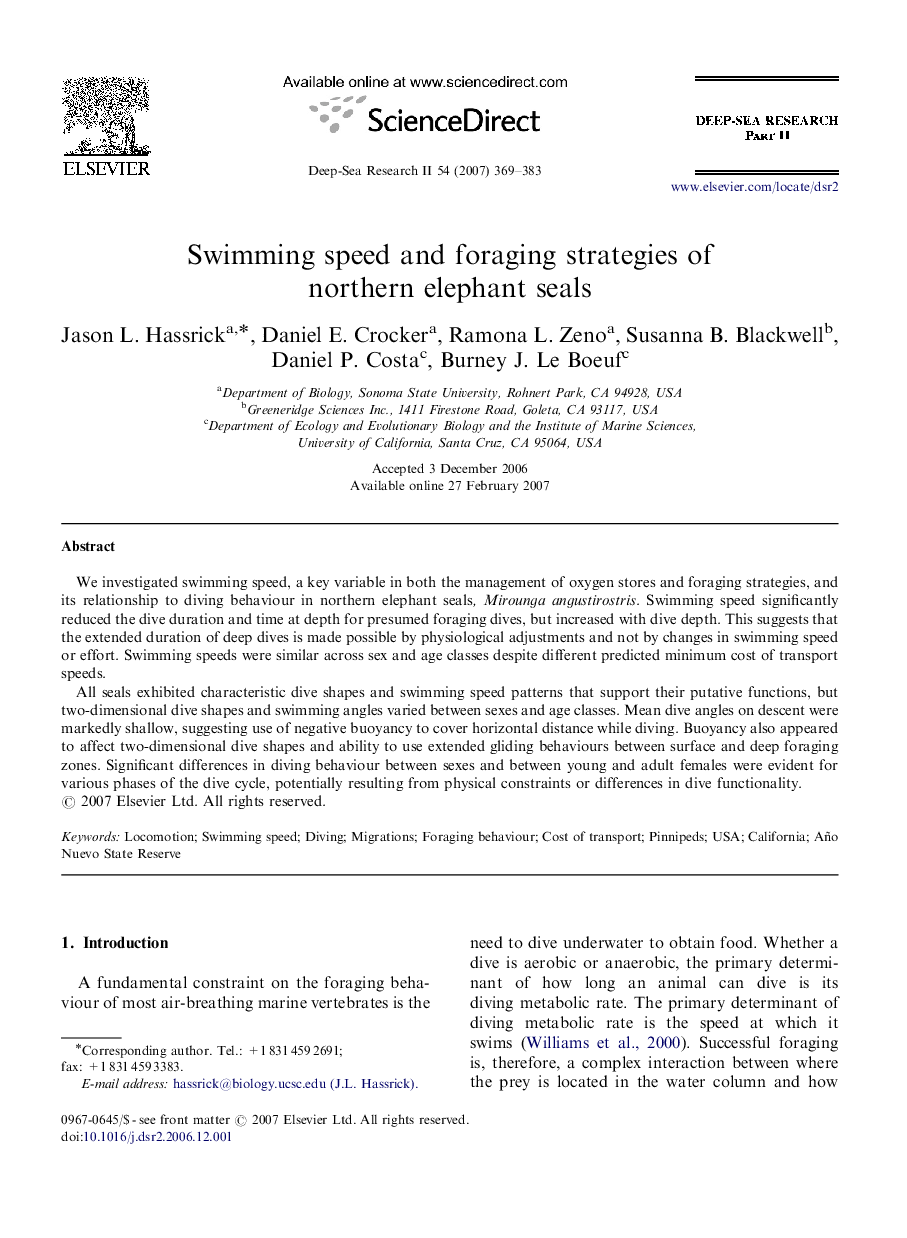| کد مقاله | کد نشریه | سال انتشار | مقاله انگلیسی | نسخه تمام متن |
|---|---|---|---|---|
| 4538133 | 1626508 | 2007 | 15 صفحه PDF | دانلود رایگان |

We investigated swimming speed, a key variable in both the management of oxygen stores and foraging strategies, and its relationship to diving behaviour in northern elephant seals, Mirounga angustirostris. Swimming speed significantly reduced the dive duration and time at depth for presumed foraging dives, but increased with dive depth. This suggests that the extended duration of deep dives is made possible by physiological adjustments and not by changes in swimming speed or effort. Swimming speeds were similar across sex and age classes despite different predicted minimum cost of transport speeds.All seals exhibited characteristic dive shapes and swimming speed patterns that support their putative functions, but two-dimensional dive shapes and swimming angles varied between sexes and age classes. Mean dive angles on descent were markedly shallow, suggesting use of negative buoyancy to cover horizontal distance while diving. Buoyancy also appeared to affect two-dimensional dive shapes and ability to use extended gliding behaviours between surface and deep foraging zones. Significant differences in diving behaviour between sexes and between young and adult females were evident for various phases of the dive cycle, potentially resulting from physical constraints or differences in dive functionality.
Journal: Deep Sea Research Part II: Topical Studies in Oceanography - Volume 54, Issues 3–4, February 2007, Pages 369–383